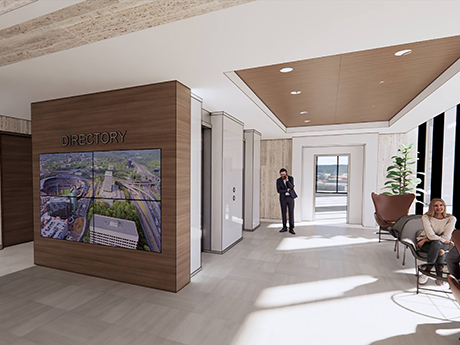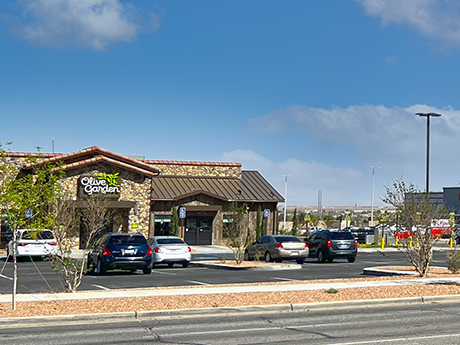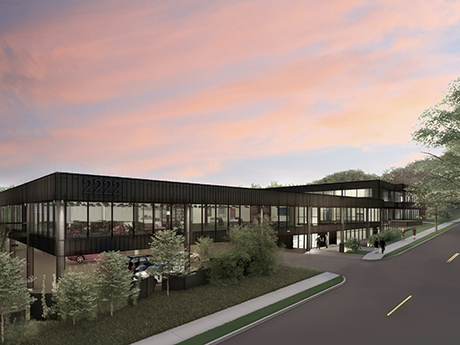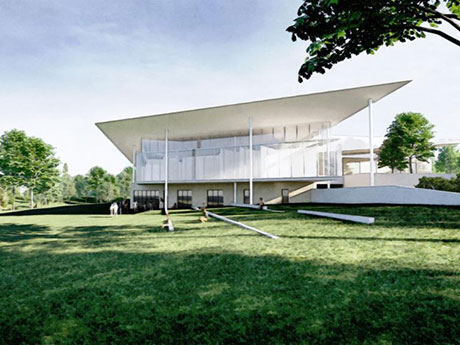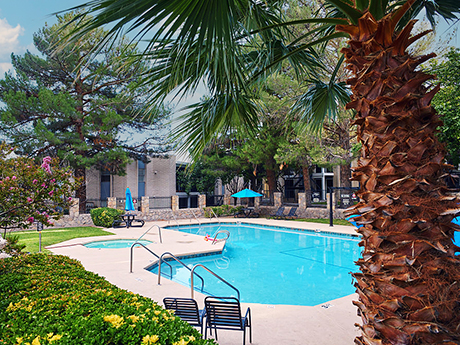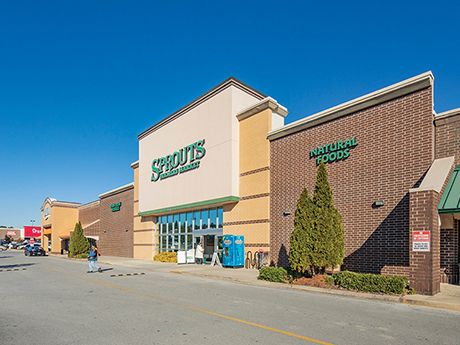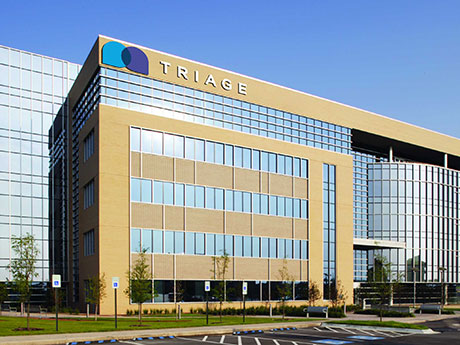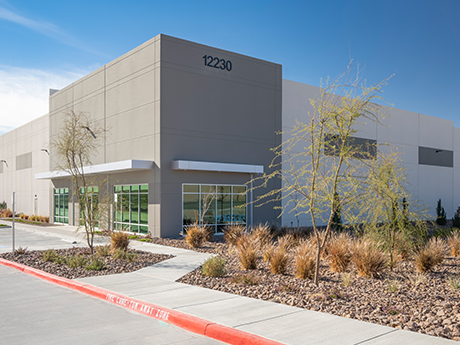In many ways, metro Atlanta is a tale of two office markets. Google, Microsoft, Papa John’s, Visa and FanDuel are just some of the heavy hitters that have signed major deals over the last year and a half, fueling leasing activity that is getting closer to pre-pandemic norms. Much of that action has been centered in the Central Business District (CBD), which registered a 68 percent year-over-year increase in leasing volume compared to first-quarter 2021. According to research from CoStar Group, leasing volume for the entire market totaled 3.2 million square feet in the first quarter, which is on par with the 10-year quarterly average. Midtown, where more than 2 million square feet of new product is under construction and the majority of corporate heavyweights have planted their flag, led all submarkets in leasing activity, with Cushman & Wakefield reporting nearly 314,000 square feet of new leases signed in the first quarter. Midtown’s overall walkability, abundance of high-rise residential units, new office buildings and access to talent from local universities and mass transit have enabled it to become a talent magnet for major employers and one of the nation’s premier submarkets. However, the vast majority of office tenants in metro …
Market Reports
Milwaukee is a city known for beer, motorcycles, basketball and blue-collar workers. However, Milwaukee should also be known for having a strong retail marketplace as well. With ever-changing markets and trends, retailers are finding many ways to get creative and adapt with the trends. Due to the adaptation, the competition for prime outlots is at an all-time high and does not appear to be changing any time soon. Outlot wars It’s with absolute certainly that the Milwaukee retail market has seen a massive influx for prime outlots. So much so that the phrase “outlot wars” is regularly used when describing retail outlot developments and redevelopments. In an already saturated segment of retail real estate, we have seen many new concepts/categories pushing to secure premium outlot sites in the market. Quick-service restaurants (QSRs) and fast-casual restaurants, auto and financial institutions are the biggest participants to date. Since the beginning of the COVID pandemic in 2020, we have seen a pretty significant shift in the food category from QSR and fast-casual concepts alike. Milwaukee has seen many existing concepts continue to expand or reposition within a market, but we have also seen new concepts making a push to enter the market as …
By Andy Moreno, director of operations, MIMCO; and McGee Sauls, senior vice president, MIMCO Historically, the El Paso market has often been overlooked, primarily due to its distance from other major Texas markets. However, that sentiment is shifting rapidly due to strong economic and population growth. While an accurate figure is difficult to pin down, the number of new entries and expanding franchises within the market has exploded in recent years. “As recently as 2015, national and regional operators were only beginning to recognize the sales potential of the El Paso market and just how underserved the growing population had become,” states Scott Walker, president of MIMCO. “Competition was limited, which led to advantages for existing operators. The landscape shifted dramatically due to the pandemic; since the second quarter of 2020, new retail categories have become active,” he continues. “Marketing quality sites generally leads to multiple offers from competing operators including car washes, lube shops, coffee shops and quick-service restaurants. We love to see this variety move into our market and drive competition for the next great location.” Market competition is advantageous and a key driver of innovation. Retailers use competition to discover and adopt the most efficient processes that …
While the Birmingham market never fluctuates too heavily in either direction, it typically remains relatively stable compared to national trends. Such has been the case with the effects of COVID-19. Birmingham is well-positioned for a return to the office, thanks in large part to our economy’s heavy makeup of local and regional businesses. Most smaller businesses have been in the office for some time, while large national enterprises still wrestle with what normal operations will look like moving forward. General market information Birmingham saw some positive absorption in 2021, with the occupancy rate holding steady at 81 percent, around the historical average. Birmingham comprises approximately 20 million square feet of office space with five main submarkets. Midtown, comprising mostly mid-size, Class A office buildings, remains the strongest submarket with an occupancy rate over 92 percent and rental rates in the mid to high $20s per square foot ($24.12 per square foot average). The Central Business District has seen companies leave for suburban submarkets like Midtown and Highway 280/Interstate 459, however the occupancy rate of 78 percent has remained relatively stable over the past couple of years, with rents in the low to mid $20s per square foot ($21.07 per square …
What does the Lincoln, Nebraska commercial real estate market have to offer? Quite simply it has land, room to grow, affordability and a centralized location. Pair these attractive and unique features with an educated workforce in a culturally diverse community and the answer becomes clear. Lincoln’s commercial real estate market has a lot of potential. Despite Lincoln’s small size of approximately 300,000 people, it is experiencing the same challenges and triumphs as the bigger metropolitan areas. Warehouse space One of the biggest challenges in the Lincoln market is the low supply of industrial space in a high-demand environment. The industrial vacancy rate as of year-end 2021 was 1.6 percent. Any new product that comes on market is leased quickly and the per-square-foot selling price is trending up with a 31 percent increase in just three years. Unfortunately, in the Lincoln market, the value of new industrial construction building permits has been trending down over the last five years. The rising cost of construction makes this trend even more significant; many developers are unwilling to invest in speculative product without the certainty that tenants will pay the rental rate necessary to provide an adequate rate of return. One local developer, Las …
By Jack Stone, senior director of investments, Greysteel It seems like every month there’s a new sales record being broken in the El Paso multifamily market. But with interest rates officially rising, how long will that streak last? El Paso has been on a tear. Greysteel has sold roughly 4,000 units there in the past 36 months. That’s an impressive number, but it’s not a surprising one. Between 2012 and 2014, roughly 20 properties over 25 units traded in El Paso. That number skyrocketed to 69 properties between 2019 and 2021. But why? We’ve followed the El Paso market closely and have brought numerous first-time, out-of-state buyers to the market. The No. 1 reason they’re interested in El Paso is the competitiveness of other markets like Dallas and Austin, where cap rates have just compressed too much. With lower cap rates and cash-on-cash returns, investors started flocking to secondary markets where they can achieve higher yields. But El Paso, while a secondary market, has several factors that help it stand out from the rest: (1) it’s one of the top 20 largest cities in the country, which comes as a surprise to many; (2) it’s well-diversified, having weathered the recession …
Like many of the markets within the Sun Belt, Birmingham’s economy remained relatively resilient through the emergence of the COVID-19 pandemic. Despite its share of small business and restaurant closures, leasing activity is back to par, and owners continue to see steadily rising rental rates — up 3.1 percent over the last 12 months — as tenant demand continues to be robust. Retail absorption over the last 12 months is a healthy 400,000 square feet compared to -510,000 square feet a year ago, which is a phenomenal 909,000-square-foot change just 18 months out from the emergence of the Coronavirus and effective shutdown of the U.S. economy. As Americans return to whatever the new normal is deemed to be and retail conditions continue to rebound, Birmingham is poised and ready to stake its claim in the South’s hierarchy of bourgeoning retail markets. Over the course of retail’s revival during the last 12 to 15 months, development has picked up throughout the Birmingham MSA, fueled primarily by build-to-suit projects for established chains in rapidly expanding suburban markets like Hoover. Stadium Trace Village, a master-planned, mixed-use development at Interstate 459 and Ala. Highway 150, has been one of the most recent projects to …
Content PartnerFeaturesIndustrialLeasing ActivityLee & AssociatesMarket ReportsMidwestMultifamilyNortheastOfficeRetailSoutheastTexasWestern
Lee & Associates’ First-Quarter 2022 Economic Rundown by Sector
Lee & Associates’ newly released Q1 2022 North America Market Report scrutinizes first-quarter 2022 industrial, office, retail and multifamily outlooks throughout the United States. This class-by-class review of commercial real estate trends for the first quarter of the year focuses on how real estate is adjusting to long-term post-COVID attitudes. Lee & Associates has made the full market report available here (with further breakdowns of factors like vacancy rates, market rents, inventory square footage and cap rates by city), but the overviews offered below provide sweeping looks at the overall health and obstacles for four major commercial real estate sectors. Industrial: Rents Pushed on Strong Demand Strong demand for industrial space throughout North America continued in the first quarter as vacancies fell to record lows and rent growth hit double digits. First quarter net absorption in the United States totaled 92.8 million square feet, which was up 25 percent year over year but down 35 percent from the 143-million-square feet average of the last three quarters of 2021. Annualized rents rose 10.1 percent in the U.S. and the average vacancy rate fell to 4.1 percent. Part of this trend was due to a pause in new construction starts early in the pandemic. However, …
Omaha’s office market saw more total lease transactions in 2021 for more total space than in any year since our firm has tracked it — 281 transactions for nearly 1.8 million square feet. In a typical year, Omaha usually sees approximately 200 transactions for 1 million square feet. In addition to leasing activity, net absorption was positive at 310,391 square feet, and Omaha’s overall vacancy rate contracted slightly over the year. In turn, year-over-year market rent growth reached its highest point since pre-COVID-19. “Though slow-moving compared with other major U.S. metros, Omaha’s office market is showing early signs of a recovery thanks to its diversified employment base,” states CoStar. It seems fair to describe the market as stable as we are not seeing large swings in space availability and pricing, but it feels tenuous, just as corporate office space decision-makers are dealing with uncertainty. We continue to see office users choosing to wait and see on decisions affecting demands for office space. Most of the numbers are trending the right way, albeit slowly, but Omaha’s vacancy rate is more than 300 basis points higher than seen in many years before the pandemic, and we finished 2021 with 324,398 square feet …
By Josh Meredith, director of development, VanTrust Real Estate Sharing a 2,000-mile border, Mexico and the United States trade over $500 billion worth of goods and services each year, representing our country’s second-largest trade partnership. Impressively, over 20 percent of this exchange travels through the El Paso, Texas, port of entry, according to the Texas Comptroller of Public Accounts. This movement has deemed the El Paso/Ciudad Juarez (Mexico) region as one of the most important industrial centers in North America for years. Although the El Paso/Juarez market has a history of extensive commercial activity, with more than 1,100 manufacturing operations alone, the region has remained under the radar, experiencing traditional, steady industrial growth for the past decade. However, with undeniable strategic advantages and 300-plus Fortune 1000 companies in the El Paso/Juarez region, the past couple of years have attracted an increasing number of developers looking to capitalize on the market’s industrial and distribution needs. Now, with record net absorption and a remarkably low vacancy rate, the “borderplex” is the market to watch, building a reputation as not only a competitive industrial center, but also as a driver of some of the most important global manufacturing trends. Competitive Edge With more …


